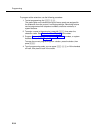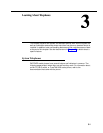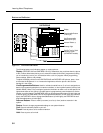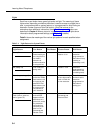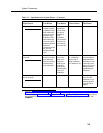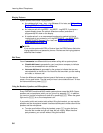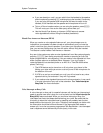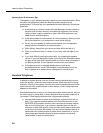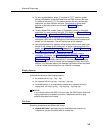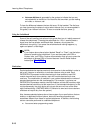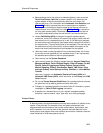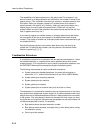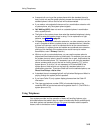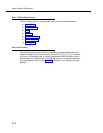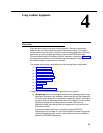
Learning About Telephones
3-8
Speakerphone Performance Tips
The speaker on your system phone has a sensitive sound-activated switch. Room
acoustics and background noise can affect the proper operation of the
speakerphone. To ensure that your speakerphone works effectively, follow these
guidelines:
■ Avoid placing your phone in areas with high background noise caused by
sources such as motor vehicles, manufacturing equipment, loud voices,
radios, printers, copiers, typewriters, other noisy office equipment, and
heater and air conditioning fans.
■ Avoid talking before the other person is finished speaking. When you both
talk at the same time, only one person’s voice comes through.
■ Do not use your speaker to make announcements over a loudspeaker
paging system connected to your phone system.
■ When talking, always face your phone and stay within two feet of it.
■ Place your phone at least six inches (15 cm) away from the edge of your
desk.
■ If you have difficulty hearing the other party, try increasing the speaker
volume. If you have background noise, try turning off the microphone when
the party at the other end is speaking and turning it on when you speak. If
the difficulty persists, lift your handset to continue the conversation.
■ In conference rooms, a separate speakerphone (such as the
SoundStation® from Lucent Technologies) is recommended, since the
built-in speaker on a system phone is designed for individual use.
Standard Telephones
In addition to system phones, you can connect industry-standard touch-tone or
rotary dial phones—and even some feature phones (which have built-in calling
features)—directly to the system. You can also combine standard phones on the
same extension with system phones or other devices, without using expensive
adapters or connectors.
Standard phones can do many of the things that system phones can do, and you
can save money by using them in certain situations when a system telephone is
not needed. Follow these guidelines when using standard phones:
■ Use standard phones as power failure backups; system phones will not
work. If you connect standard phones to the first two extensions on the
PARTNER ACS processor module, users can place and answer outside
calls on the first two lines. If you connect a standard phone to the first
extension on each 206 module, users can place and answer outside calls
on the first line of each 206 module. You can connect standard phones in
combination with system phones at power failure extensions, or you can
simply keep spare standard phones at those extensions to serve as
replacements in case of a power failure.



